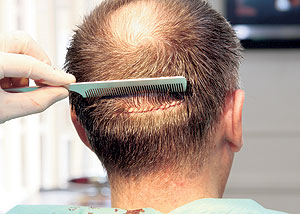Using Double Edged Trichophytic Closure
Friday, December 10th, 2010Hair Restoration surgery is evolving rapidly and we are consistently refining our approach on a regular basis to improve the quality of transplanted hair while at the same time minimizing the possibility of complications. Double edged trichophytic closure is a new approach to donor wound closure that has been put into practice by Dr. Mohebi and US Hair Restoration.
Double edged or two sided trichotomy can help to minimize complications of trichophytic closure (based on the width of epithelium that is being removed and inability of some the hair follicles or oil glands to find their way out to the skin surface). This practice of double edged closure helps us to minimize the width of the top skin layer (epithelium) that is removed from each edge of the donor wound. By making these changes, double edged trichophytic closure allows hair to grow into the wound from both edges and thus minimize the contrast between a patient’s scar (with no hair) and surrounding scalp (with 100% hair density).
By employing the double edged trichophytic closure in our pratice, we constantly have results of less detectable donor scars. In addition to less detectable scarring, we are also able to minimize the risk of folliculitis or ingrown hairs in the donor area, which are the two of the most common complications of traditional trichotomy.

